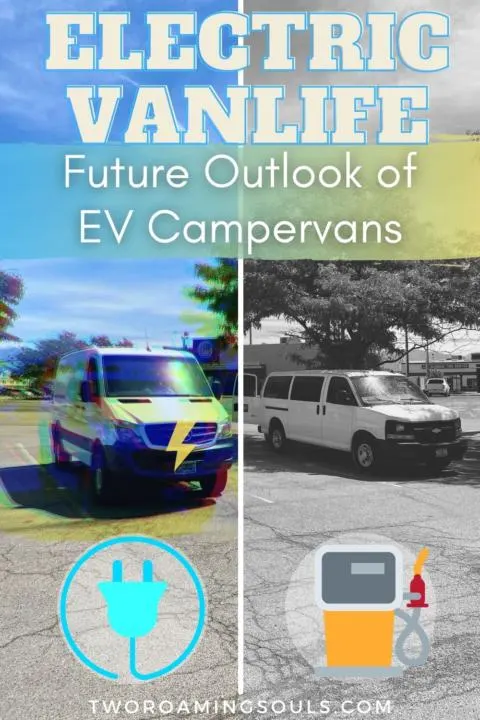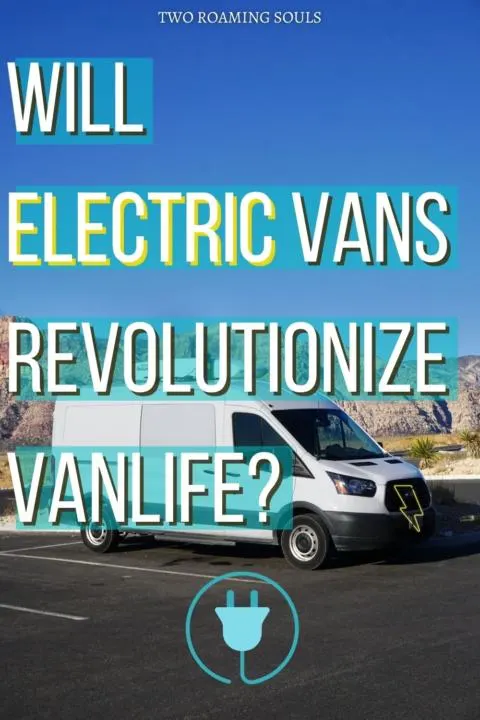Will electric vans be able to launch vanlife into an electrified, zero-emissions future? As the auto industry makes its push toward electric vehicles, we have seen several manufacturers announce EV vans making their way into production. Ford, GM, Mercedes, and EV startup Rivan have all either started production or announced their plans to release all electric vans in the coming years. That competition will ultimately be good for consumers as they push for more capable and more affordable EV vans. But the vanlife community will be eager to see how electric vans might be able to revolutionize vanlife.
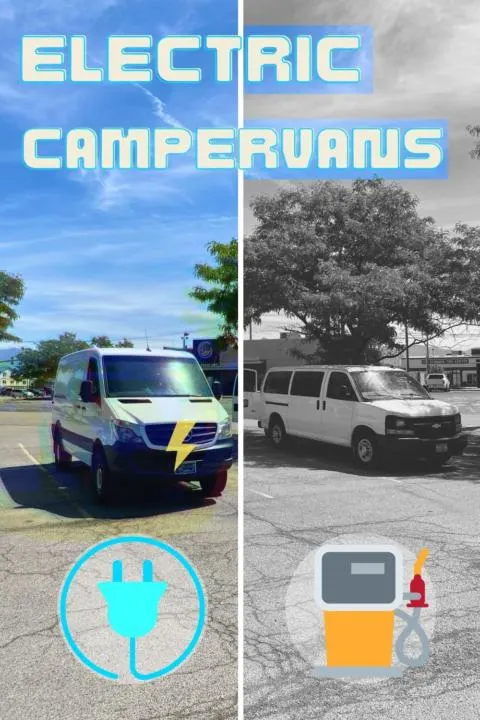
Electric vans are primarily being designed as “last-mile” delivery vehicles. And that focus may result in electric vans that aren’t necessarily suited to the needs of vanlife. But the potential to save a lot of money on “fuel” and maintenance are still enticing to a notoriously penny-pinching vanlife crowd. This post aims to determine if electric vans will make sense for vanlife from a practical and financial standpoint.
This post may contain affiliate links. Disclosure policy.
Do Electric Vans Have Enough Range For Road Trips?
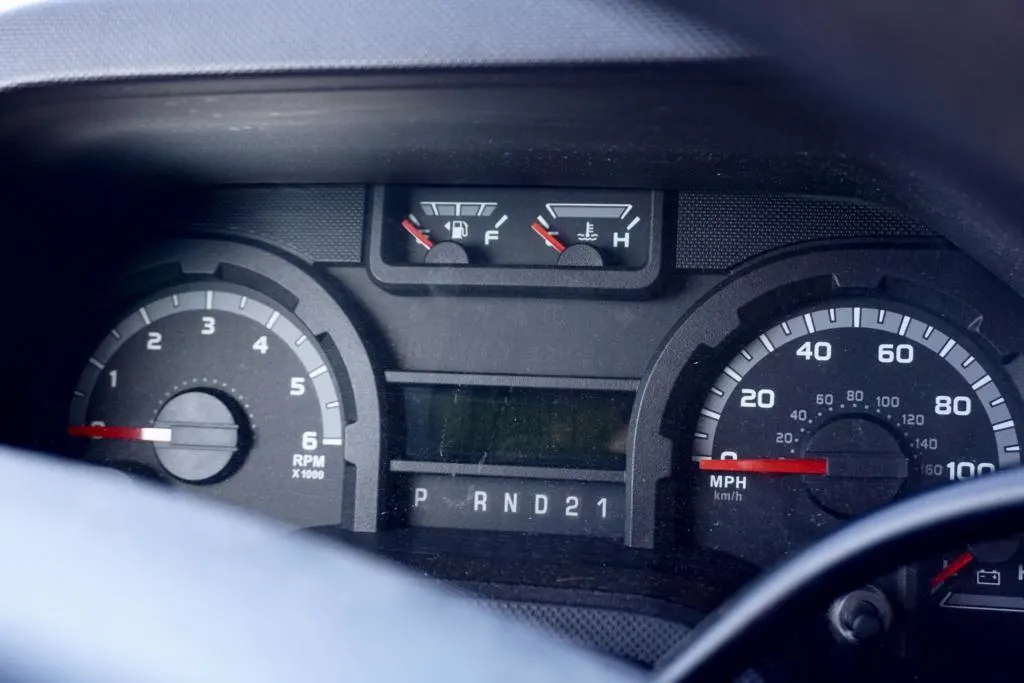
The limiting factor that nearly all electric vehicle (EV) owners have to reckon with is range. That is, how far can the battery of your electric vehicle drive before it needs recharging. But unlike an internal combustion engine (ICE), EV batteries take much more time to recharge than the few minutes required to refill a gas or diesel tank.
And also, achieving a respectable range for large boxy vehicles like a cargo van is more difficult than a small, aerodynamic sedans. Thus, typically resulting in less range for EV vans vs small cars.
To confront the issue of range, owners of electric vehicles have to be mindful of two things. First, how far they drive on a daily basis, and second, where they can spend several hours charging.
For urban and suburban EV owners, the range problem has basically been solved already. They typically drive less than 50 miles per day and have access to a large network of charging options. For many people, the answer may be as simple as charging at home, or at work.
But what about vanlifers living outside of urban areas and living a nomadic life? The problem of range is still very much an issue for campervan owners who often drive long distances in a single day. And in addition, often find themselves seeking out places off-grid far away from an EV charging infrastructure. Driving long distances and camping in places without anywhere to charge up at night is a bad combo for electric vehicles.
What Kind Of Range Will Electric Vans Get?
Keep in mind that these numbers are still largely speculative at this point, and subject to all kinds of “real-world” variation.
- The 2022 Ford E-Transit claims to get 126 miles (Cargo Van Low Roof Models)
- The Mercedes eSprinter (soon headed to the US) can get about 100 miles.
- The GM EV600 claims to get up to 250 miles.
- The Rivian (Amazon) EV Vans are claimed to start out with 150 miles in range.
But there’s plenty of reason to believe that the real-world range will be much lower for camper vans.
For starters, EV vans are mostly being catered towards fleet vans doing “last-mile” delivery. Carrying loads of consumer packages is typically going to be a much lighter payload than a fully-converted campervan.
Secondly, those manufacturers’ range claims are measured under “normal” driving conditions. And you can bet there’s a decent asterisk needed if you want to reproduce those numbers in the real world. Camper vans are commonly traveling at elevation, off-road, with heavy loads, with things mounted on the outside, or any other common scenarios that will reduce the range.
So even in the best-case scenario, the range of this first wave of electric vans won’t be anywhere close to the 300-400 miles that most gas or diesel vans can get on a single tank.
But for argument’s sake, let’s just say an EV van gets 100 miles of range on a single charge. And if your destination is someplace remote or off-grid, then you need to factor in the range required to get back to civilization. So if you’ve only got 100 miles of range you can really only drive 50 miles out into the boonies. And that assumes there’s a good place to recharge when you return to civilization. Plus you will have to stay parked there for several hours to charge up. It won’t be a quick fuel up and then on your way.
So the range of electric vans will be a huge limiting factor for EV vanlife.
Where Can You Charge Electric Vans
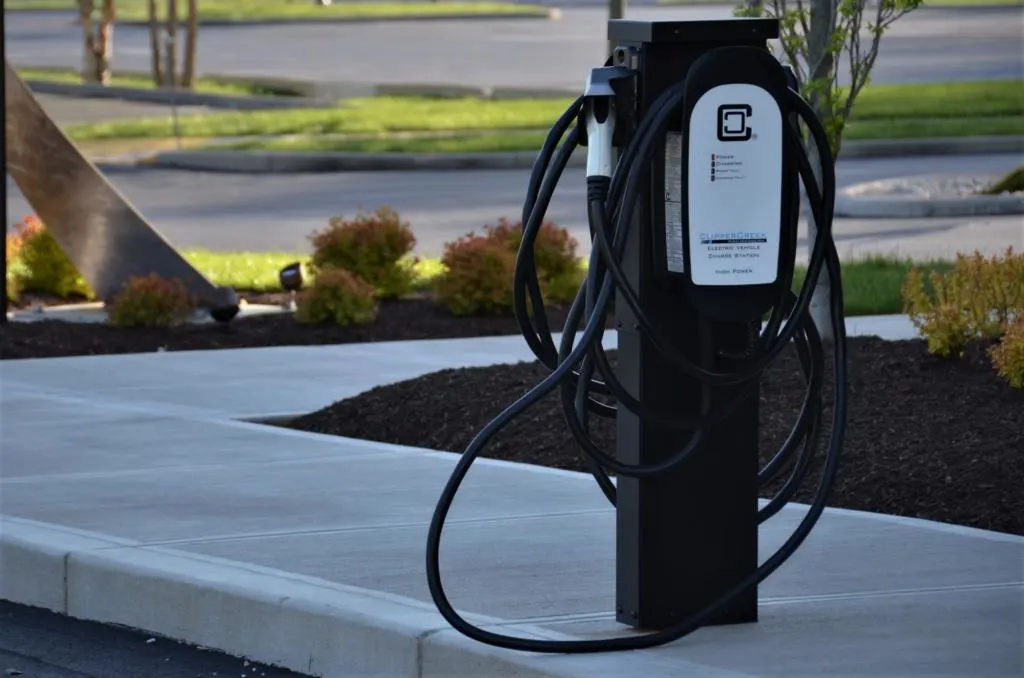
If you are a full-time vanlifer, then charging your EV campervan at home is not going to be an option. So right away you’ve already lost the easiest and most convenient option for EV charging. Or let’s say you live in a regular home and just use a campervan as a weekend adventure-mobile. Even when possible, charging at home isn’t always as easy and straightforward as it would seem. Most homes aren’t equipped with a dedicated 50Amp 240-volt circuit with nothing else on it.
Another common charging location for current EV owners is at work. But a good number of vanlifers don’t work a traditional job, or certainly not one that has the option of charging electric vehicles in the parking lot.
However, one huge advantage for future EV campervans is that the vehicle itself is a tiny home on wheels. A campervan actually makes the perfect place to hang out or get some sleep while the vehicle charges up. A regular EV owner probably wouldn’t be that thrilled to sit in their car for hours while it charges up, or if it’s at night they would be compelled to get a hotel room.
Therefore, the most promising EV charging option for vanlife is RV parks and campgrounds. A place built for mobile dwellings that already has 30Amp or 50Amp plug-ins is a perfect match for electric vanlife. Plus, RV parks and campgrounds are often located in more rural areas. And as I discussed in the previous section, finding places to charge up in remote areas is going to be one of the primary challenges for EV vanlifers.
Typically, most vanlifers aren’t willing to fork up the money to stay at RV parks and campgrounds every night. But when that $20-60 stay includes a free “fill-up”, then it starts to become much more attractive. Considering that a current gas or diesel fill up can be over $100, a place to stay and a charge up is a good deal for electric campervan owners.
Many RV parks are already experiencing smaller electric vehicles showing up at their facility looking for a place to charge up. So hopefully by the time EV vans are more prevalent, they will seize the opportunity to serve the needs of EV travelers. Similarly, hotels will probably also start offering more EV charging for guests. Though staying in a hotel room most nights isn’t very #vanlife.
I think smart businesses of all types will catch on, and realize that EV charging is the perfect way to attract customers. And not only that, customers that are a captive audience looking for something to do (eating/shopping/etc) while they wait for their vehicle to charge up.
How Fast Will Electric Vans Charge?
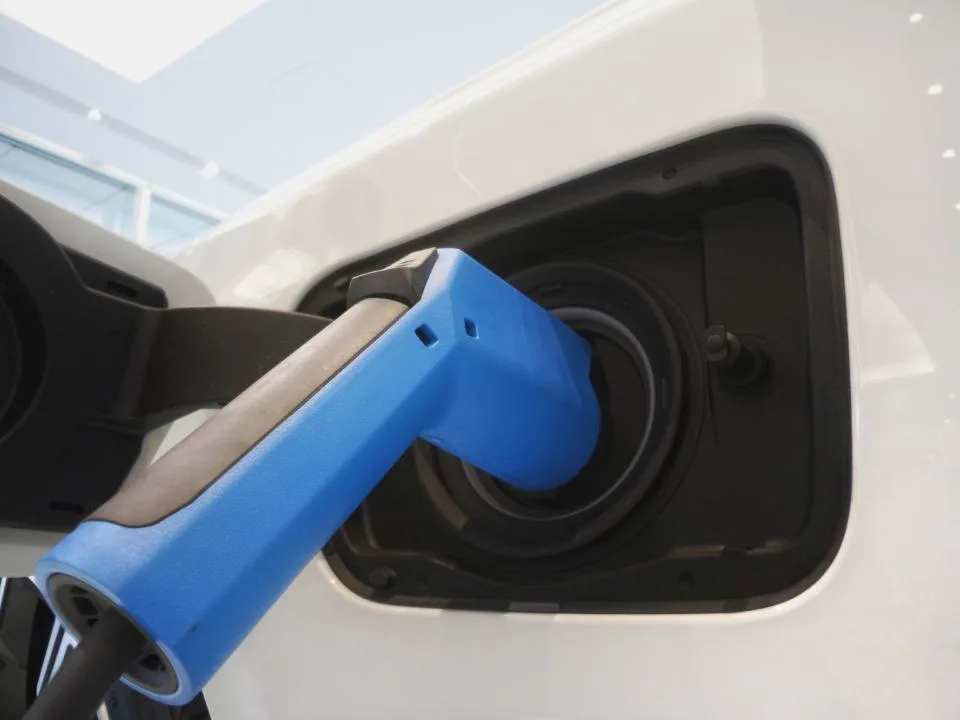
Also, another consideration is charging speed. People may be familiar with Tesla’s supercharging stations, but don’t expect anything close to those speeds on this first wave of electric vans. Most other brands of EVs max out at a “Level 2” which is still nowhere near as fast as the Tesla superchargers.
Without getting too deep into the weeds, basically “Level 1” is charging via a typical 120v outlet in a house. Like if you plugged an extension cord into a typical outlet and ran that to your EV for charging. Level 1 charges very slow, like 50 miles of range for an entire 8 hours of charging.
“Level 2” charging is 240volts (like what a clothes dryer is connected to). Level 2 charges much faster than Level 1, capable of about 120 miles of range for 8 hours or charging.
“Level 3” is 480v and popularized by Tesla’s supercharging network. But the ability of non-Tesla vehicles to use these superchargers is not widespread at the moment. (30 minutes for 170 miles of range).
It seems that at least for the foreseeable future, electric vans will only be charging with “Level 2” chargers at best. So electric van owners should expect to need an ‘overnight-length’ type of charge to get a full charge.
What About Urban Vanlife?

But not all vanlifers travel far distances or venture into remote places. Urban vanlifers may be quicker to embrace EV vans because electric vehicles are much better suited to urban/suburban life. The 3 main reasons are that urban vanlifers…
- have better access to charging locations, especially as cities make EV charging more ubiquitous.
- don’t drive as far, making range less of an issue
- prefer smaller vans that make a better EV platform
So it is likely that EV vans will be much faster adopted by vanlifers that don’t travel as far away from urban centers.
Cost Of Fuel/Ownership
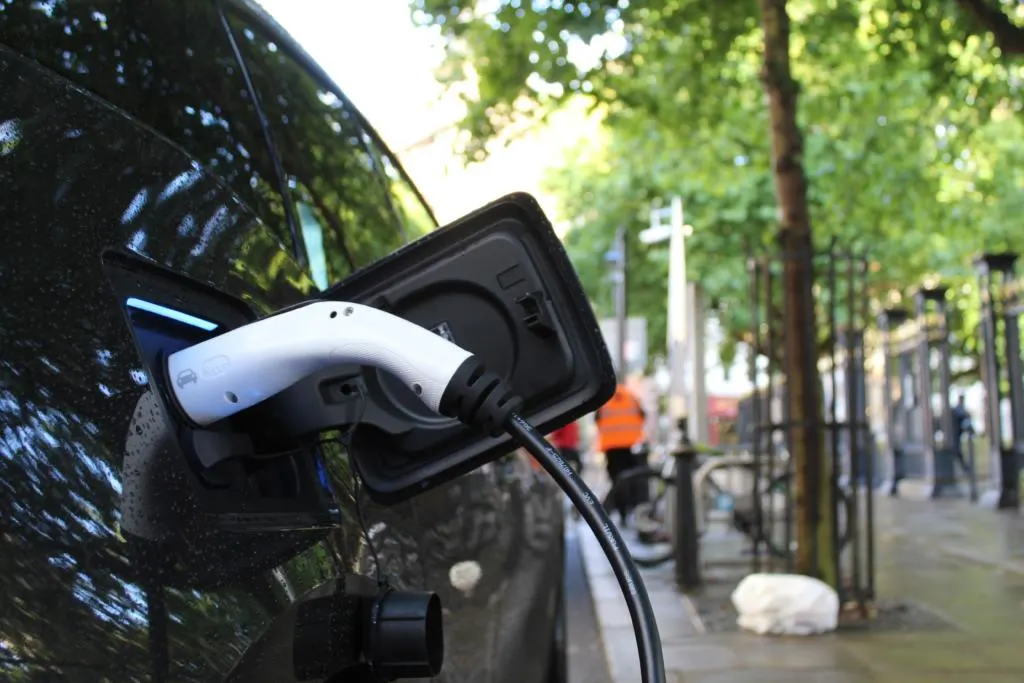
There is potential for big savings for EV owners versus gas/diesel. When you consider the cheaper “cost per mile” of electricity versus gas, and less maintenance costs, electric campervan owners stand to save money over the long run.
It’s a bit of a complicated issue to give a straight answer on. We must consider the fluctuation of gas/electricity prices, resale values, purchase pricing, maintenance costs, and tax rebates. Some studies have found EVs to be cheaper versus ICE vehicles. And as EV’s become less of a luxury product it’s likely that the cost savings of electric vehicles will be even greater.
Will Electric Vans Be Capable Off-Road?
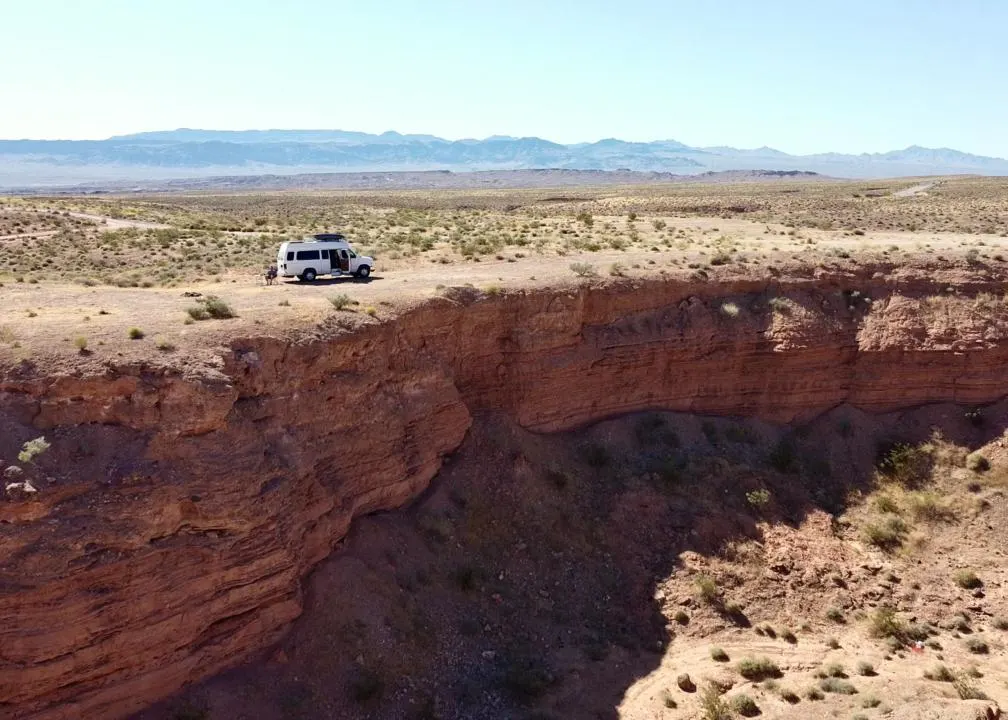
But will electric vans be capable of going off-road and reaching those rugged campsites and trailheads? The answer is certainly yes, though maybe not with AWD or 4WD just yet. The first wave of electric vans will all be two-wheel-drive. Future AWD or 4WD electric vans will be more expensive because of additional motors and parts, but the same is already true of four-wheel-drive gas vans.
But do you even need a four-wheel-drive van to get off-road? I explain why it’s not a dealbreaker in this post here.
And somewhat counterintuitively, electric vehicles can provide more instantaneous torque than internal combustion vehicles. Just watch this funny video of a Smart Car beating a Ford Mustang “off the line”. So at least in low-speed situations, like off-roading, EV’s will probably prove to be even better. Don’t believe me, check out what Jeep is doing with electric vehicles.
When it comes to driving in the mountains, electric vehicles have an advantage over internal combustion engines. High elevation means less oxygen in the air, which reduces the efficiency of ICE engines. Electric vehicles can keep charging along at high altitudes with no effect on efficiency.
No Used Market For EV Vans (Yet)
This point is somewhat obvious, but still worth mentioning if you are getting excited about getting a good deal on an EV van. Since electric vans are brand new to the market (or not even out yet), there is basically no used market for electric vans.
Those hoping to buy an electric van will be stuck paying MSRP, at least for the next couple years. Since much of the vanlife market relies on buying used vans for conversions, many wont be willing to pay the price for a brand new electric van.
For reference, the predicted starting price of the 2022 Ford E-Transit is $45,000. Cost will increase for larger models or additional features
Conclusion | Will Electric Vans Revolutionize Vanlife?
There are lots of reasons to be excited about the future of electric vans and how they might change #vanlife. But at least in the near future, EV vans don’t seem quite ready to handle the needs of most campervan owners. Their lack of range and long charge times will be a big problem for vanlifers that regularly take long road trips. The addition of more charging locations especially in remote areas will be key to the viability of EV vanlife.
But for urban vanlifers, the issues of range and access to charging locations won’t be as big of a challenge.
Electric vans coming to dominate vanlife is not a question of IF, but WHEN.
Help Share ‘Will Electric Vans Revolutionize Vanlife’ On Pinterest!
